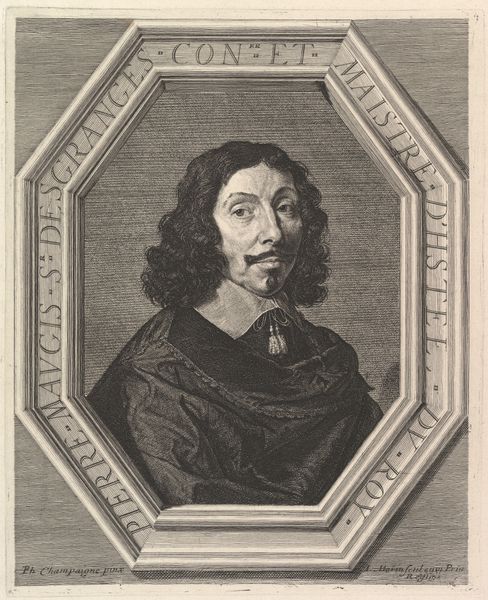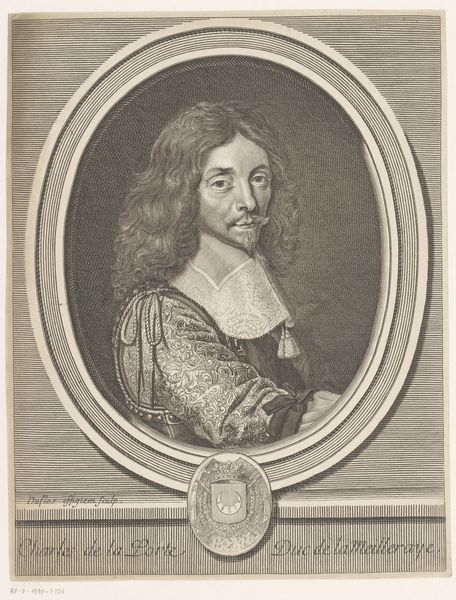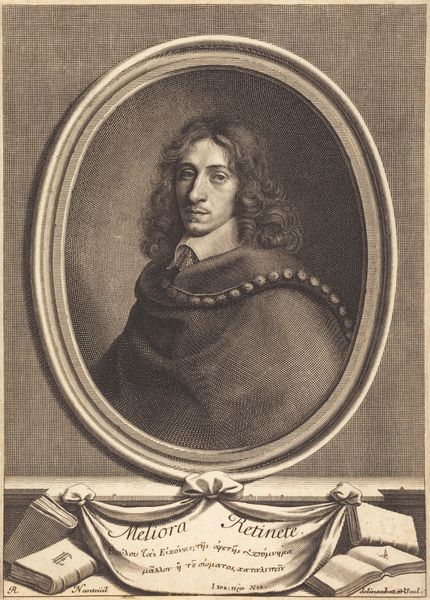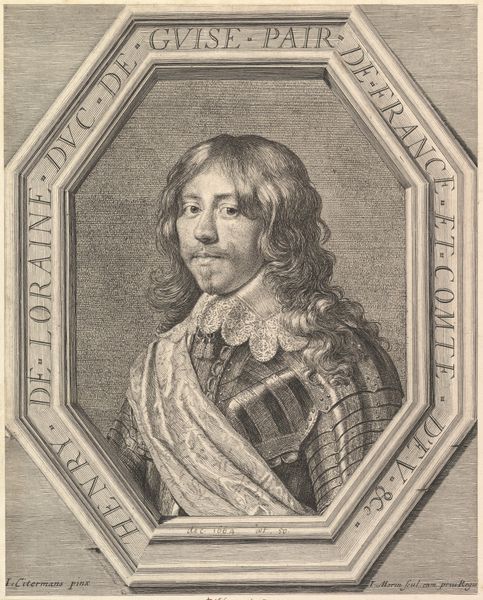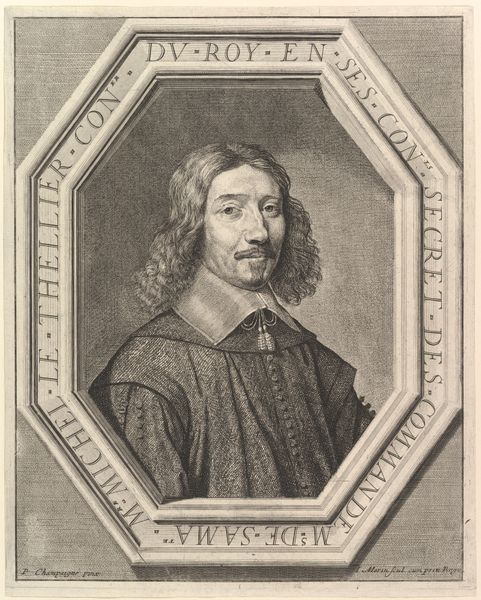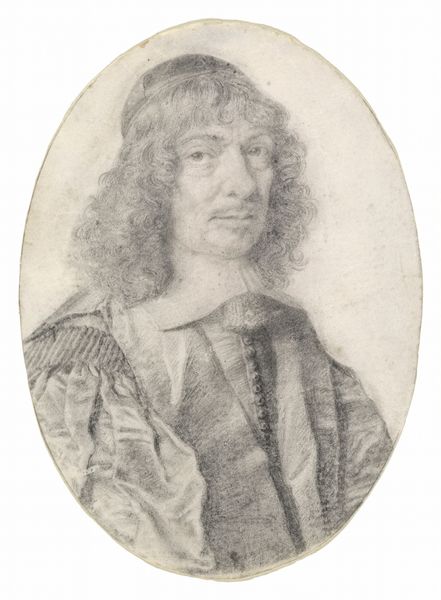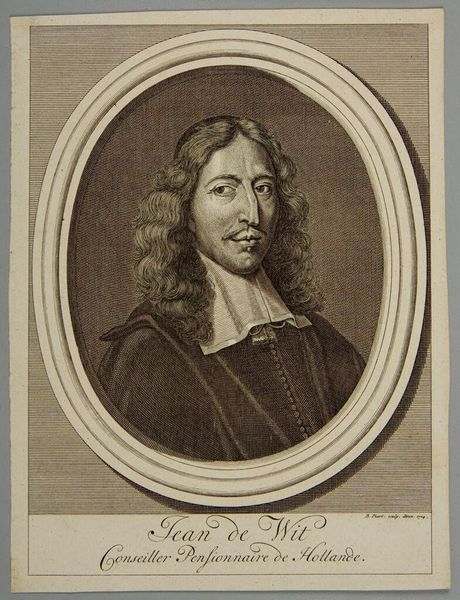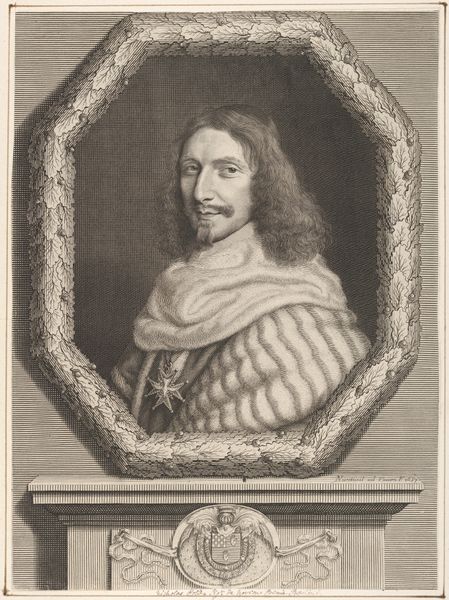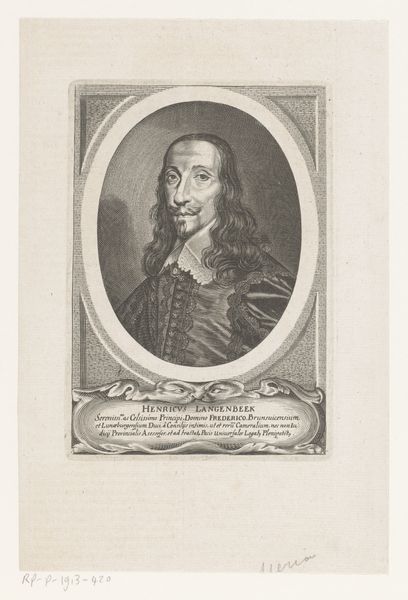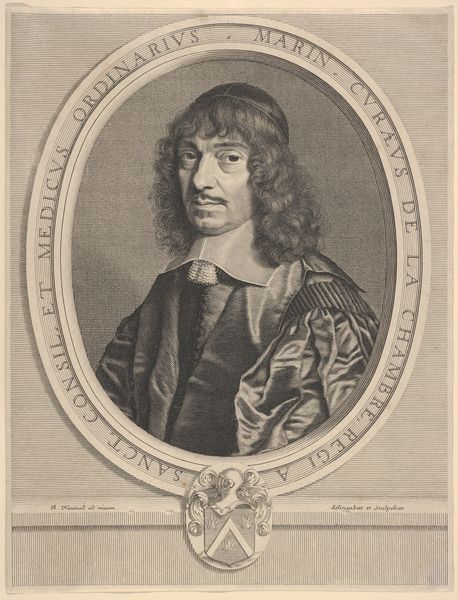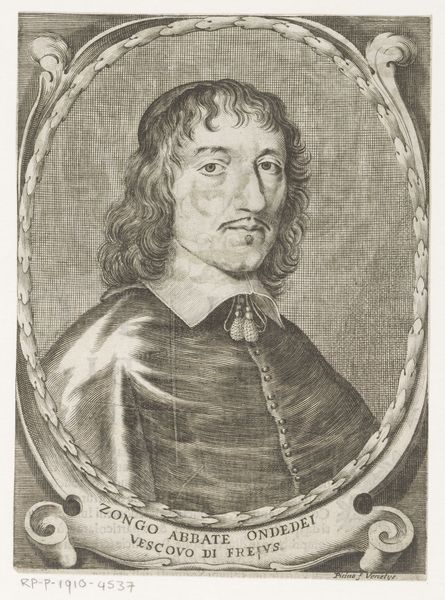
drawing, print, engraving
#
portrait
#
drawing
#
baroque
# print
#
figuration
#
men
#
portrait drawing
#
engraving
Dimensions: Sheet: 8 9/16 × 6 13/16 in. (21.8 × 17.3 cm) [cropped within plate mark]
Copyright: Public Domain
This is Josias English's engraving of William Dobson, made in the late 17th century. But the image is more than a simple likeness; it’s a carefully constructed statement about Dobson’s social and professional standing. Consider the institutional context: Dobson was no ordinary man, but a celebrated painter. English emphasizes this through the formal language of portraiture. The oval frame, the inscription identifying Dobson as painter to the King of England – these are visual cues that signal status. England was still reeling from the English Civil War and the execution of Charles I, which briefly turned England into a republic before the monarchy was restored. Dobson had been the court painter of the executed king; and thus, this image speaks to the ways the institution of the monarchy shaped artistic careers in this period. Historical research into the patronage networks of the time can tell us more about this image’s role in shaping Dobson’s legacy. Art is never made in a vacuum.
Comments
No comments
Be the first to comment and join the conversation on the ultimate creative platform.

